
13 minute read
A FRIEND’S TAKE ON LEGACY
F R I E N D T O FRIEND
Ross Peterson on Pres. Stan Albrecht and Legacy
Ross Peterson and Pres. Stan Albrecht at a USU campaign event which doubled the original goal.
retirements, like death and taxes, are inevitable. When Stan Albrecht announced his decision to leave as president of Utah State University, it both surprised and dismayed many in USU’s extended family. A product of rural Wayne County, Stan epitomizes the phrase, “one of our own.” As a former administrator at other universities and then as USU professor, dean of the College of Humanities, Arts and Social Sciences, and provost, Stan accepted the Board of Regent’s invitation 11 years ago to become the 15th president of Utah State University. The regents selected him without a search when Kermit Hall accepted a position at SUNY-Albany. After coalitions of trustees, faculty and students made their wishes known, the regents responded affirmatively.
President Albrecht’s many achievements are well documented, and different publications have heralded more than a decade of accomplishments. However, dwelling on personal recognition is not Stan Albrecht’s style. To be sure, his goal was to achieve beneficial goals for the university, but not to make himself larger-than-life. His leadership style epitomizes humility, civility and accountability. Based on partnerships and friendships, he moved the university community forward during some difficult economic times.
My personal and professional journey with Stan Albrecht began a half century ago in Pullman, Washington. As graduate students, we shared an academic professional goal, a love of baseball, an intense passion for civil rights and ironically, a 1960s’ distrust of authority. Our friendship, developed in that atmosphere, has staying power. Since most Aggies only know him as an administrator, they never saw the committed rural sociologist. Stan’s research and fieldwork focused on improving the lives of rural Americans. To understand his love of Extension and Regional Campuses, it is important to learn about his path-breaking studies of energy boomtowns in the West. While in Florida, his research on migrant workers changed the living conditions and provided healthcare for
October 2012, Pres. Stan Albrecht announces USU’s final campaign tally: $512,861,110.
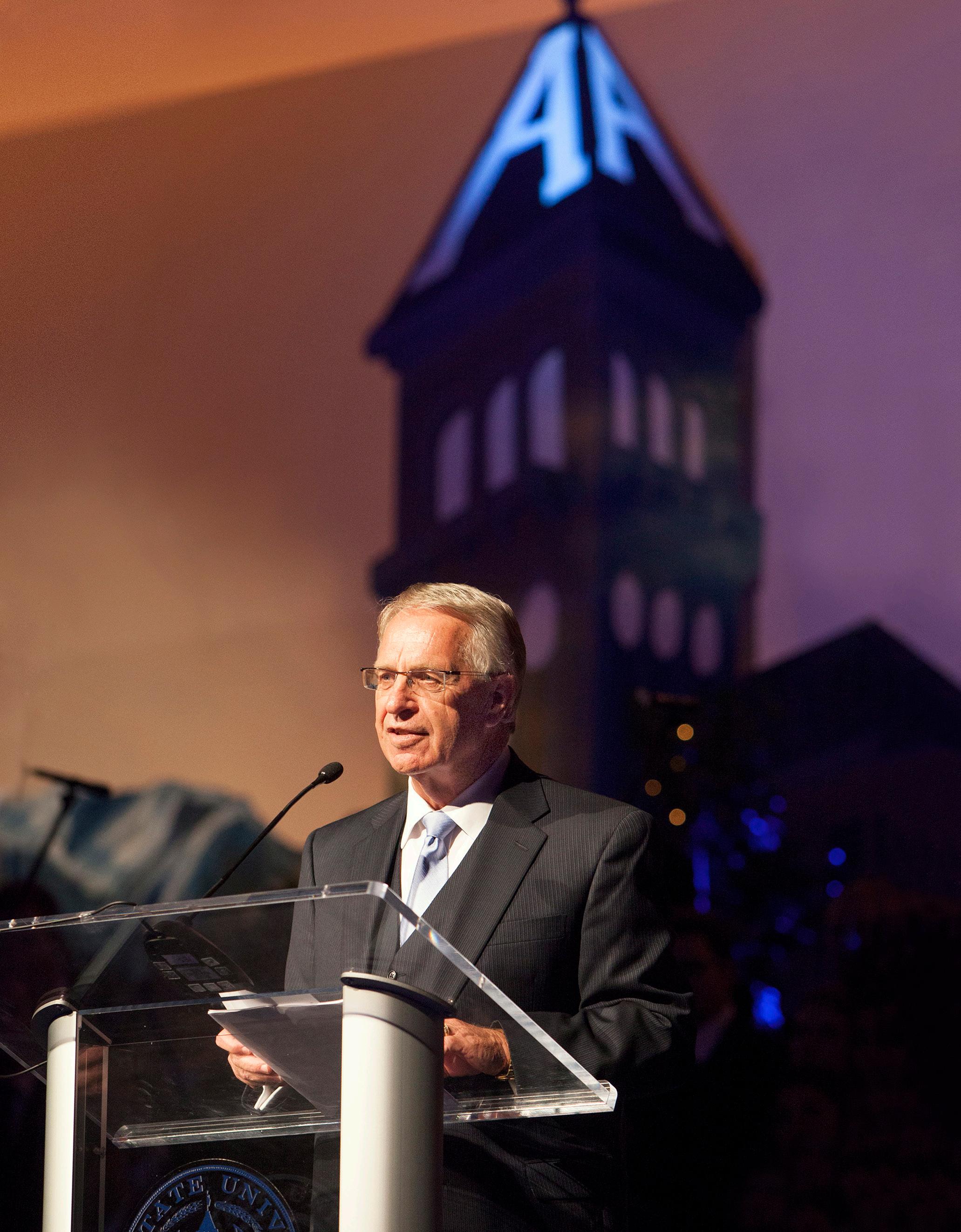
Stan
The late, great Merlin Olsen on stage with Pres. Albrecht the evening our fundraising goal went from $200 million to $400 million. Opening the technology friendly Regional Campuses and Distance Education building on the Logan campus.
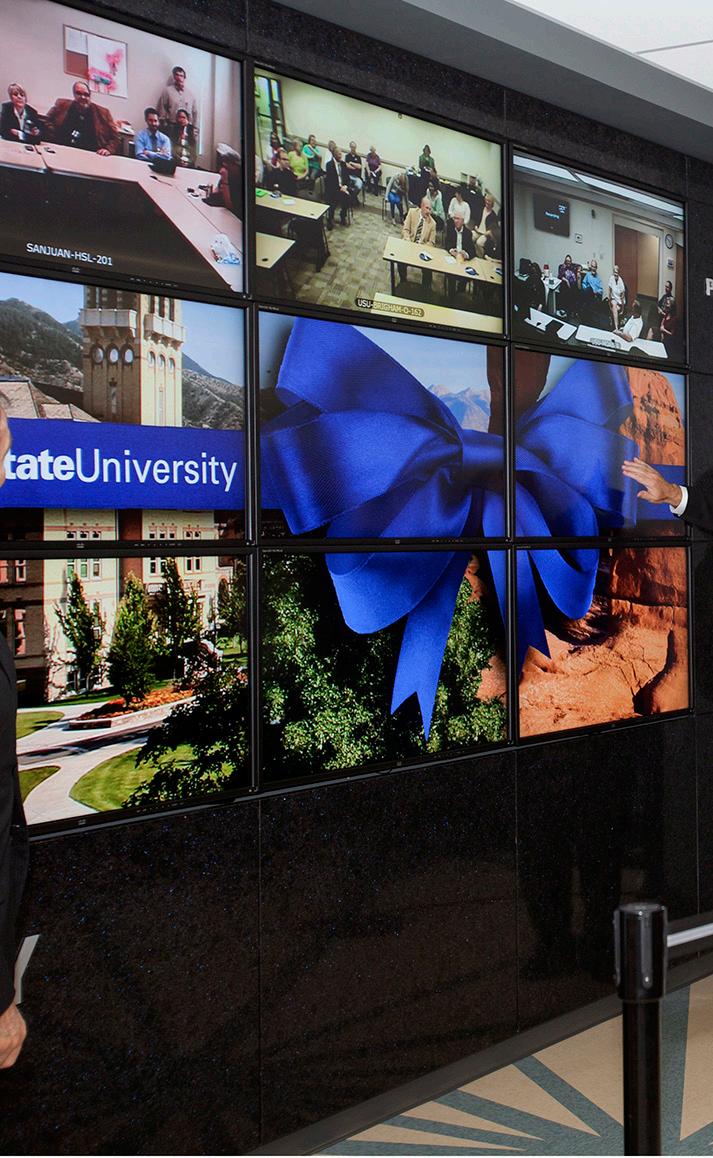
Shortly before the master of ceremonies, distinguished USU alum, the late Merlin Olsen, began the program, Stan reminded me of an idea we shared — a scholarship for “first-in-a-family college attendees.” We decided on the name, “Aggie Promise,” and then he said, “I’ll announce it tonight and each of us will pledge $10,000, OK?” He did announce it and we did fulfill the pledge with post-event spousal consent.
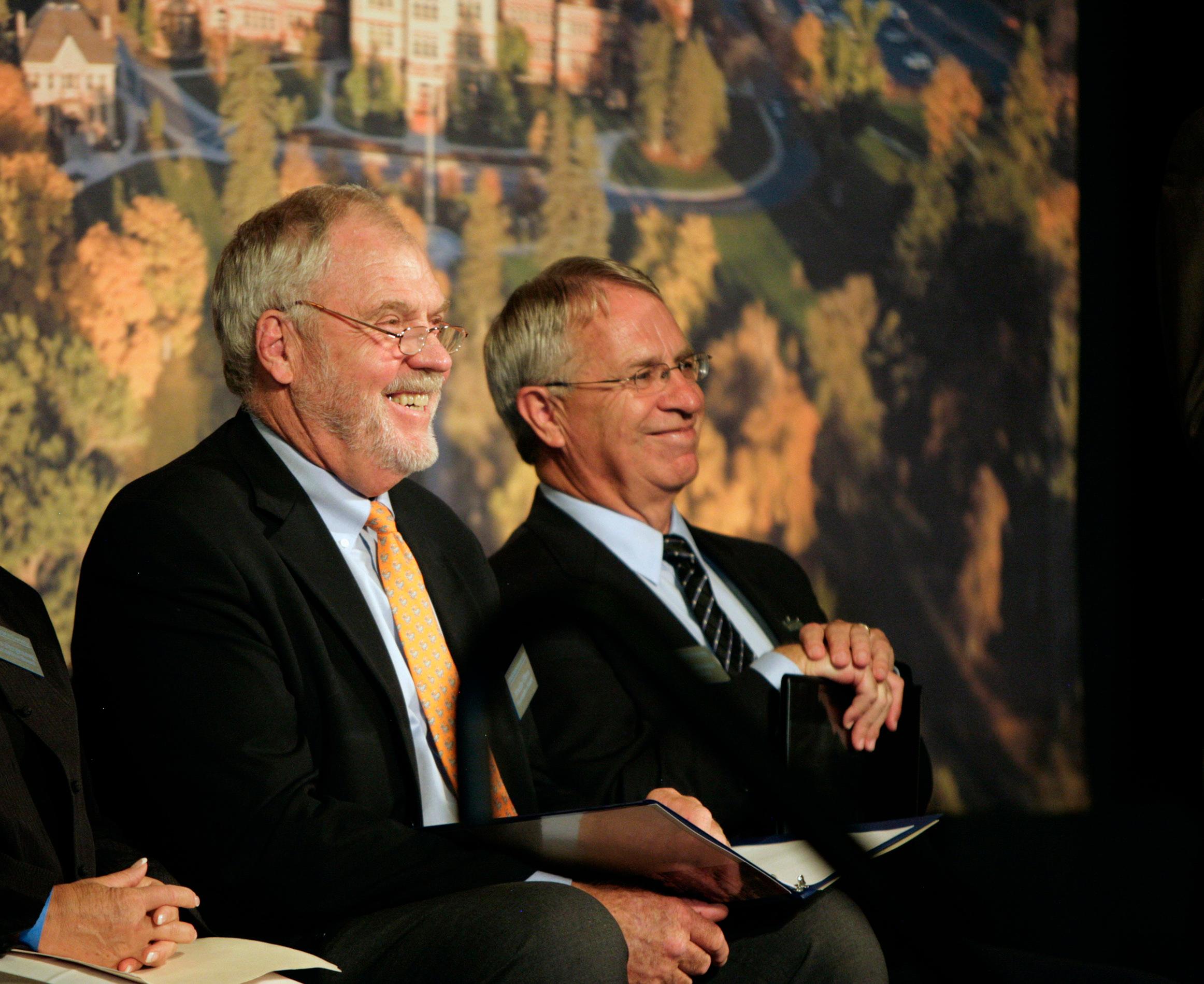
many Floridians. Simultaneously, Stan sought ways to inform workers and their children about the benefits of education. While I tried to understand and teach the past, he tried to help policymakers become aware of the present.
Another illustration of his commitment to opportunity for new students occurred during August of 2008. In the midst of the comprehensive campaign, we decided to hold a gala event at the Old Union Pacific Depot in Salt Lake City. The university wanted to thank USU’s constituents for their response during the first year-and-a-half of the campaign. The Huntsman family had brought a naming gift to the College of Business, the Emma Eccles Jones Foundation had done the same for the College of Education and Human Services. The Quinney Foundation enhanced the College of Natural Resources, and Marc and Debbie Bingham reshaped the Uintah Basin Campus. During that period, the Jim and Carol Laub Athletic Complex, the Kathryn Caine Wanlass Manon Russell Performance Hall and Sant Engineering Building as well as many significant scholarship endowments came into being. Years of groundwork by
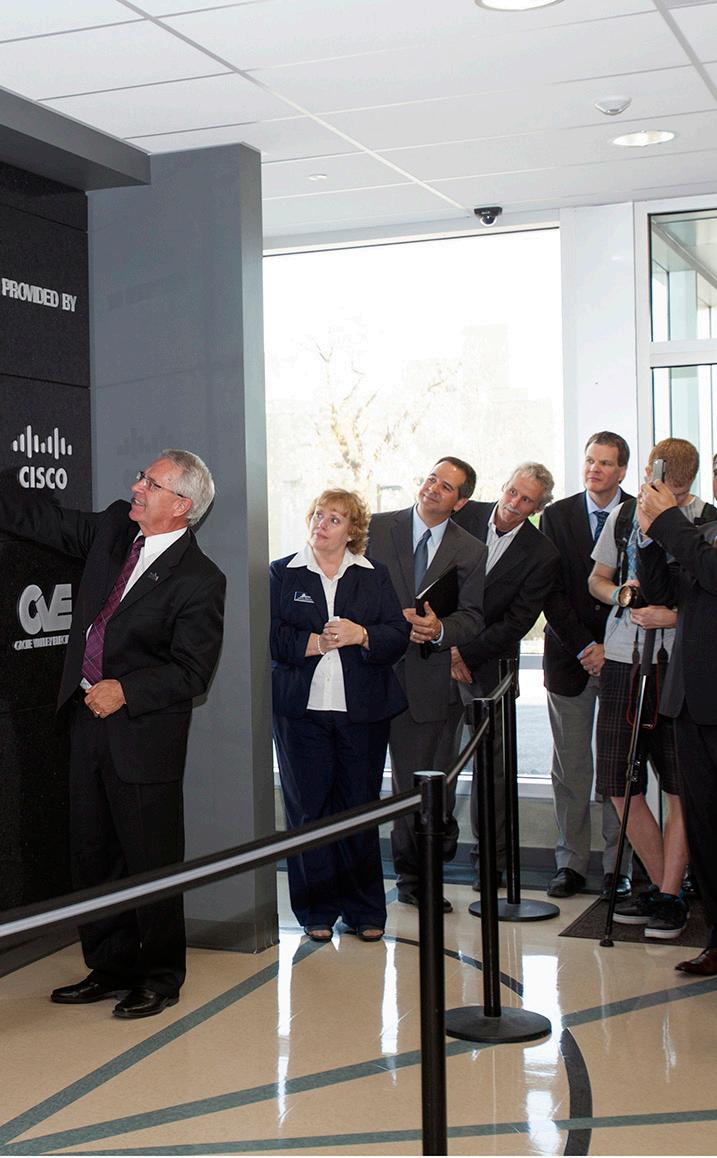
many loyal workers and generous friends of the university paid off in a major way.
Shortly before the master of ceremonies, distinguished USU alum, the late Merlin Olsen, began the program, Stan reminded me of an idea we shared — a scholarship for “first-in-a-family college attendees.” We decided on the name, “Aggie Promise,” and then he said, “I’ll announce it tonight and each of us will pledge $10,000, OK?” He did announce it and we did fulfill the pledge with postevent spousal consent. That same night we also followed the USU Foundation’s counsel and informed the crowd of over 500 that we had extended the campaign until 2012 and had increased its goal from $200 million to $400 million. Two months later, the brokerage-house failures and mortgage market collapse left a huge cloud hanging over our highly optimistic plan.
Just before Christmas 2008, someone suggested we suspend the campaign and declare a victory at $200 million. President Albrecht never even considered that as an option. The campaign became presidential-driven as we focused on increasing the endowment, enhancing
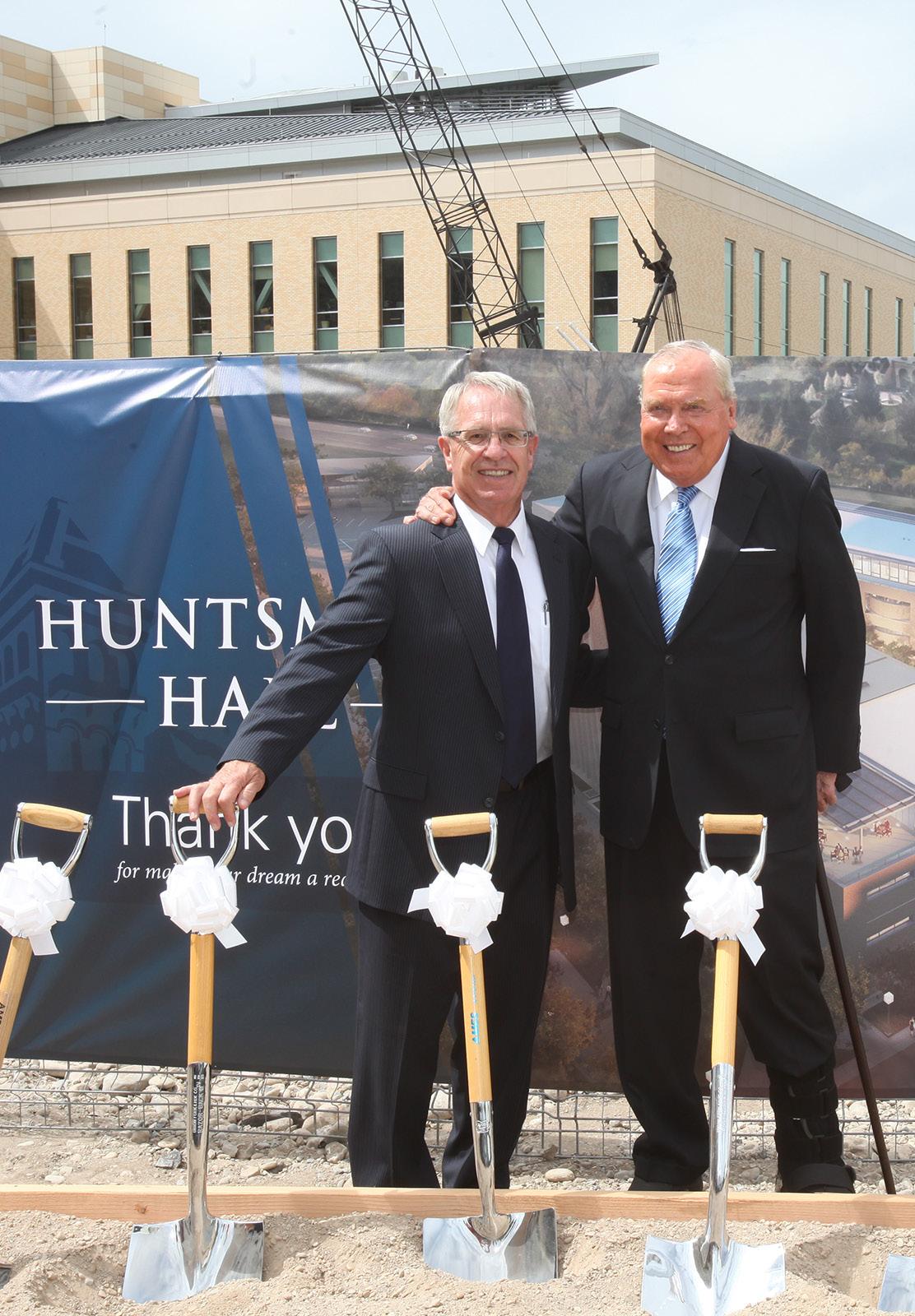
Pres. Stan Albrecht joins Jon M. Huntsman at the groundbreaking for the recently opened Huntsman Hall.
Lunch with a national icon: Jeff Woodbury, Ross Peterson, National Baseball Hall of Famer Tommy Lasorda, Stan Albrecht and Doug Foxley at the Dugout Club, Dodger Stadium.

Perhaps Stan’s greatest partnership was with his wife, Joyce, and their family. Joyce, a professional, remained working for Advancement in the College of Arts throughout their shared presidency. They sacrificed privacy, family time and avocations for the welfare and future of USU ... To be sure, Stan checked on his beloved LA Dodgers, some hearty tomato plants and a few cattle from time to time, but for the most part, the two of them spent 11 years at task, nearly “24-7.”
facilities throughout the system, while simultaneously developing new alumni relationships and relying on old friends. Through years of budget cuts, few raises and some despair, the goal remained. The results are well-known and the campus is physically transformed. The spirit of optimism and the ability to continue the many projects provided a gigantic boost to the economy wherever the USU footprint left its mark. By USU Founders Day 2012, the campaign generated in excess of $500 million.
Perhaps Stan’s greatest partnership was with his wife, Joyce, and their family. Joyce, a professional, remained working for Advancement in the Caine College of the Arts throughout their shared presidency. They sacrificed privacy, family time and avocations for the welfare and future of USU. Their children and grandchildren had to sacrifice as well. To be sure, Stan checked on his beloved LA Dodgers, some hearty tomato plants and a few cattle from time to time, but for the most part, the two of them spent 11 years at task, nearly “24-7.” They never neglected
other obligations — they simply piled them higher and deeper.
The concept of partnerships extended well beyond the campus. The Albrechts chose to serve the university by becoming very visible on charitable boards, accrediting agencies and organization committees. If Stan had not taken a leadership role with the various athletic conferences and the NCAA, it is doubtful USU could have emerged from the chaotic world of conference re-alignments and become a member of the Mountain West Conference. Forging partnerships also enabled the university to bring its athletic physical facilities into the 21st century.
Joyce and Stan developed the same relationships within the arts community that allowed them to complete a Performance Hall, endow a world-class string quartet and renovate 50-year-old facilities within the Chase Fine Arts Center. The sisters, Manon Caine Russell and Kathryn Caine Wanlass, secured the arts legacy for USU. The Caine College of the Arts became a centerpiece for this aspect of the university’s mission and role. The partnership with all donors enabled the university to portray the arts with class and style.
One of the attributes of Stan Albrecht’s presidency is simply trust. Members of the Utah Legislature are not always enamored by university presidents. As academics, presidents are often notorious for lecturing and assuming that the audience is certainly not as informed as the “expert.” As a native of Utah, who understands both geography and genealogy, Stan Albrecht developed a trust among legislators that is admirable and will be difficult to duplicate. Regents, trustees, legislators and others knew he delivered on his word. Few people could have pulled off a merger between an established land-grant university and a struggling community college in Price, Utah, nearly 200 miles apart. Another example was his convincing the legislature to allow USU to partner with Washington State University by funding the beginning of a veterinary school in the College
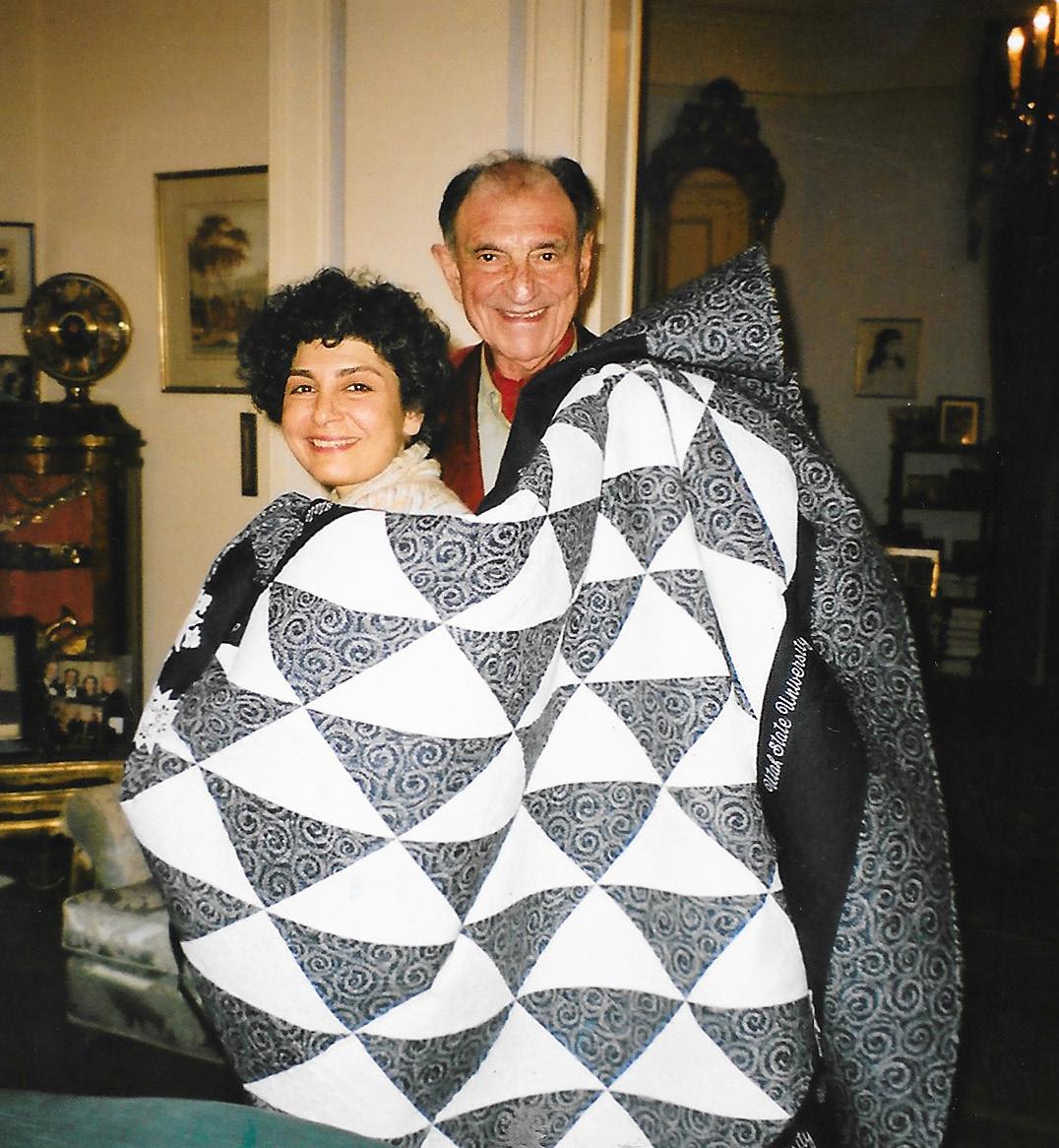
Areshir Zahedi and his daughter, Princess Mahnaz, warmly receive a handmade quilt presented to them by Stan and Joyce Albrecht.
A Friendship that has Brightened My Life
I had the privilege of friendly relationships with a number of presidents of Utah State University, from Franklin Harris and Daryl Chase to Stan Albrecht. We all shared a common attachment to this noble institution, which I have always considered my second home.
But my affections for USU are much more than personal. Like all graduates of USU, I am grateful for the education I received there, but as an Iranian I am also appreciative of the friendship and help so many affiliated with Utah State University have always extended to my beloved country. These noble and peace-loving people came to Iran to help us rebuild our country. Great friends like President Franklin Harris, President Daryl Chase and others from Utah State University worked hand in hand with the Iranian brothers in the early stages of the modernization and development of our country.
When professor Stan Albrecht became president of USU, he and his gracious wife, Joyce, delighted me by their visit to Montreux and their presence at a dinner in their honor in Trois Couronnes. More recently they came to my residence, Villa les Roses, and brought Mahnaz and me a precious, hand-woven gift from Utah. The kind attentions of this dear and noble couple have continued throughout their time at the university, brightened my life and left unforgettable remembrances for me to cherish.
When he recently wrote to me that he had decided to step down after 11 years of presidential responsibilities, I was not surprised. At 87, I should know the burden and the exigent nature of such jobs and could understand the arguments of my noble friend, now 73.
As he says in his message to colleagues “the journey has been a truly remarkable one.“ I am sure he can look back with great satisfaction and pride at what he has been able to achieve in the past decade. I am convinced, as are many others who have known Stan or worked with him, that his departure will be much regretted but the indelible legacy of the passionate work he has done, his commitments to future generations, his leadership — all the great things he has accomplished — are chronicled in the collective memory of the community.
I have always believed that there is no boundary between music, love, education and humanity. In his brilliant academic career, whether as a professor or administrator, in Utah or other places, Stan Albrecht has been a notable example, gracious, noble and caring.
I have been proud of my friendship with such a unique and steadfast couple as Stan and his loving wife, lady Joyce. They have both a distinguished place in my mind and my heart.
Utah State University President Stan and First Lady Joyce Albrecht. They “personalized their responsibility to steward the gifts to USU,” says friend Ross Peterson.
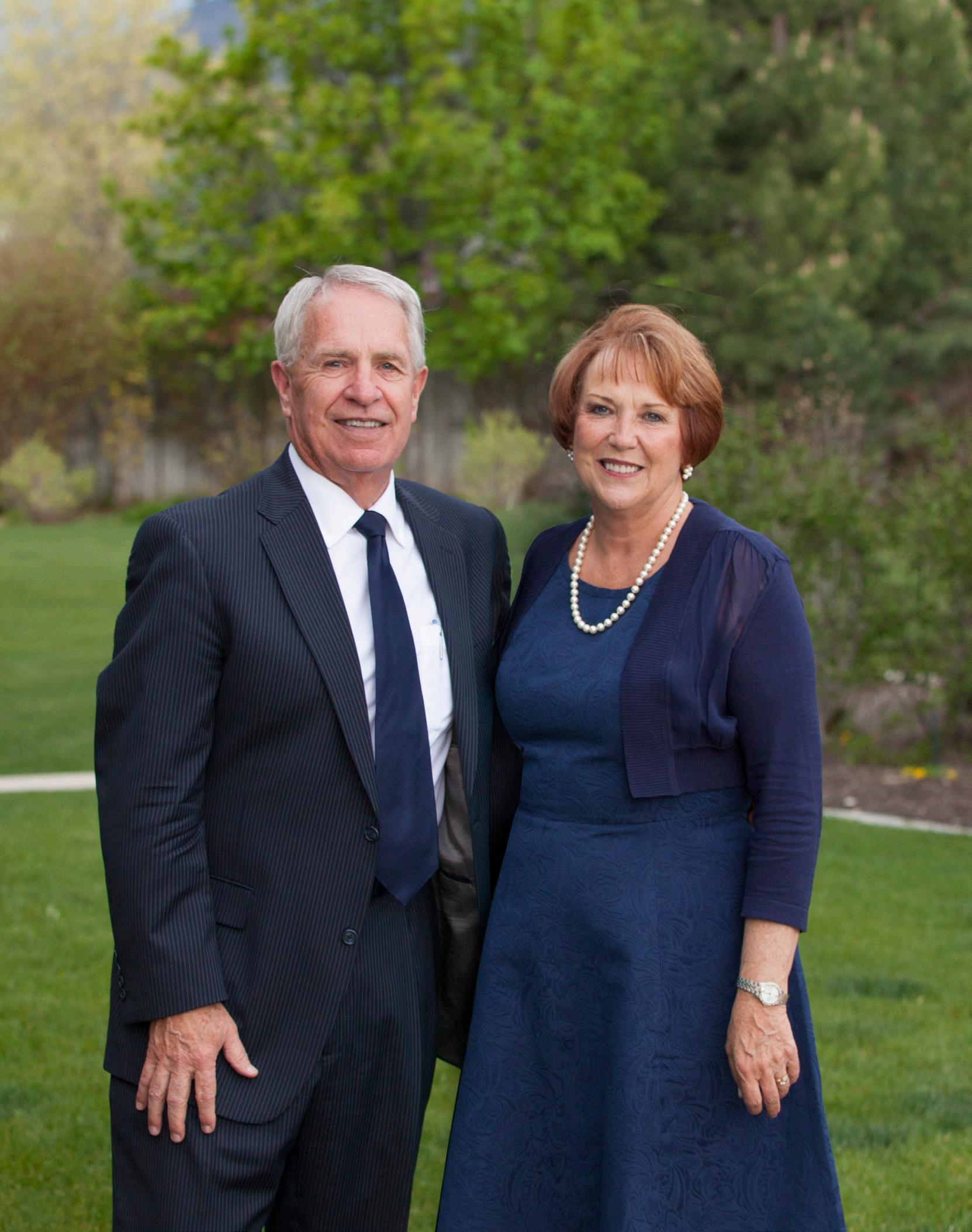
of Agriculture and Applied Sciences. The same can be said for the expansion of a USU system-wide nursing program in the Emma Eccles Jones College of Education and Human Services. The 2016 legislature’s willingness to fund a new building for the College of Science punctuates that truth. No one understood the mission and potential of land-grant colleges better than Stan and his USU colleagues. The Regional Campus concept is not unique to Utah and Stan researched other systems in a variety of states, recognizing that perception is reality. He brought a sense of inclusiveness to the many corners of the state that created an atmosphere for collegiate learning.
The loyalty of numerous supporters exemplifies the large degree of trust brought by Stan Albrecht to the university. On many occasions, Jon and Karen Huntsman, whose gifts to the university are substantial, publicly expressed their trust of USU’s administrators. The Armenian students, brought to USU and supported through the generosity of the Huntsmans, knew the Albrechts as friends. Stan and Joyce personalized their responsibility to steward the gifts to USU. Stan’s style enabled individuals and foundations to see a need and respond to a request without feeling much pressure. In fact, one night in New York City, as we concluded a dinner with USU alum John and his wife, Barbara, Wilkerson, Barbara said, “OK, now are you two ever going to ask us for money?” (We did, and they gave generously.)
When eight USU students and a faculty member were tragically killed in an accident in 2005, President Albrecht personally handled the disaster on behalf of the university. He and College of Agriculture and Applied Sciences Dean, Noelle Cockett, chose to meet with all of the families to express sympathy and genuine love, as well as to hold a candlelight memorial service. The death of any student affected the Albrechts in a deeply personal way. They invested themselves in recruiting and retaining students and shared every loss.
Joyce and Stan Albrecht welcome a new crop of students from the Dominican Republic to the president’s home in Logan.
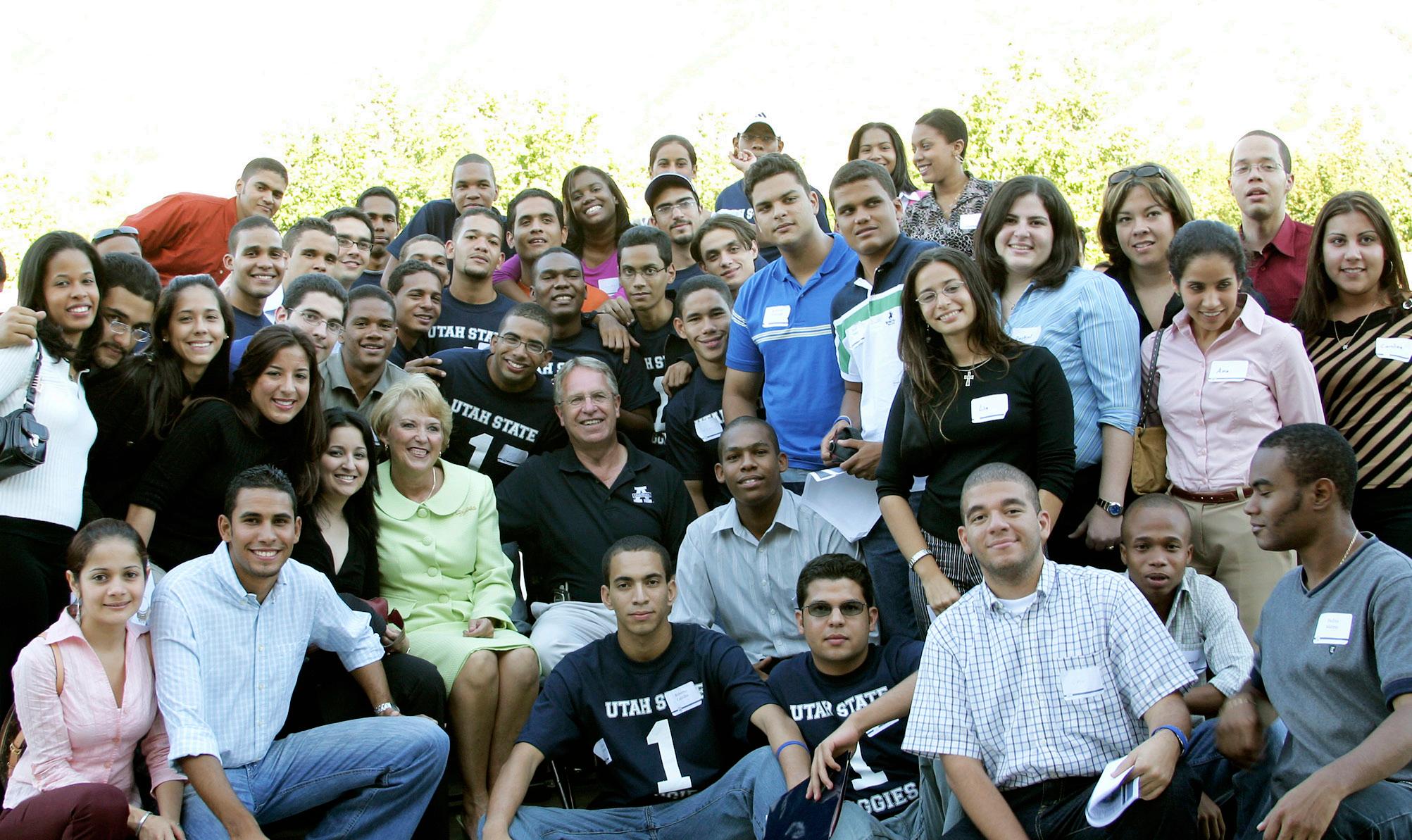
Once again, when parents trust a child to the university’s care, the Albrechts felt a responsibility for their well-being.
What is the legacy of Stan and Joyce Albrecht at Utah State University? Institutions do not stop and start with every leadership change. The regents chose wisely in 2005 because the Albrechts had experienced six years of USU administrative involvement. They developed a clear vision of what USU needed to fulfill its potential. Once again, my observation is very personal, but I would sum it up in three words, “Stan and Joyce.” They established first-name relationships in an unparalleled way. Perhaps people with roots in the small Utah towns of Fremont and Midway are not too concerned about titles. This dedicated couple established an atmosphere of comfortable intensity and everyone genuinely felt they were the Albrechts’ friends. For those who worked with Stan at all levels, the friendship required hard work and accountability. The physical campuses throughout the state are considerably enhanced. Educational opportunities have been expanded dramatically as enrollment increased throughout the system. USU’s total endowment has nearly tripled under Stan’s guidance and the university survived significant economic and cultural alterations. Most importantly, alumni, students and friends realize that a land-grant university belongs to “the people,” and its doors are open to all who seek an opportunity to fulfill their destinies, hopes and dreams. The Albrecht successors will inherit a proud university with generations of students poised for a brilliant future. That is the legacy.
— Ross Peterson ’65
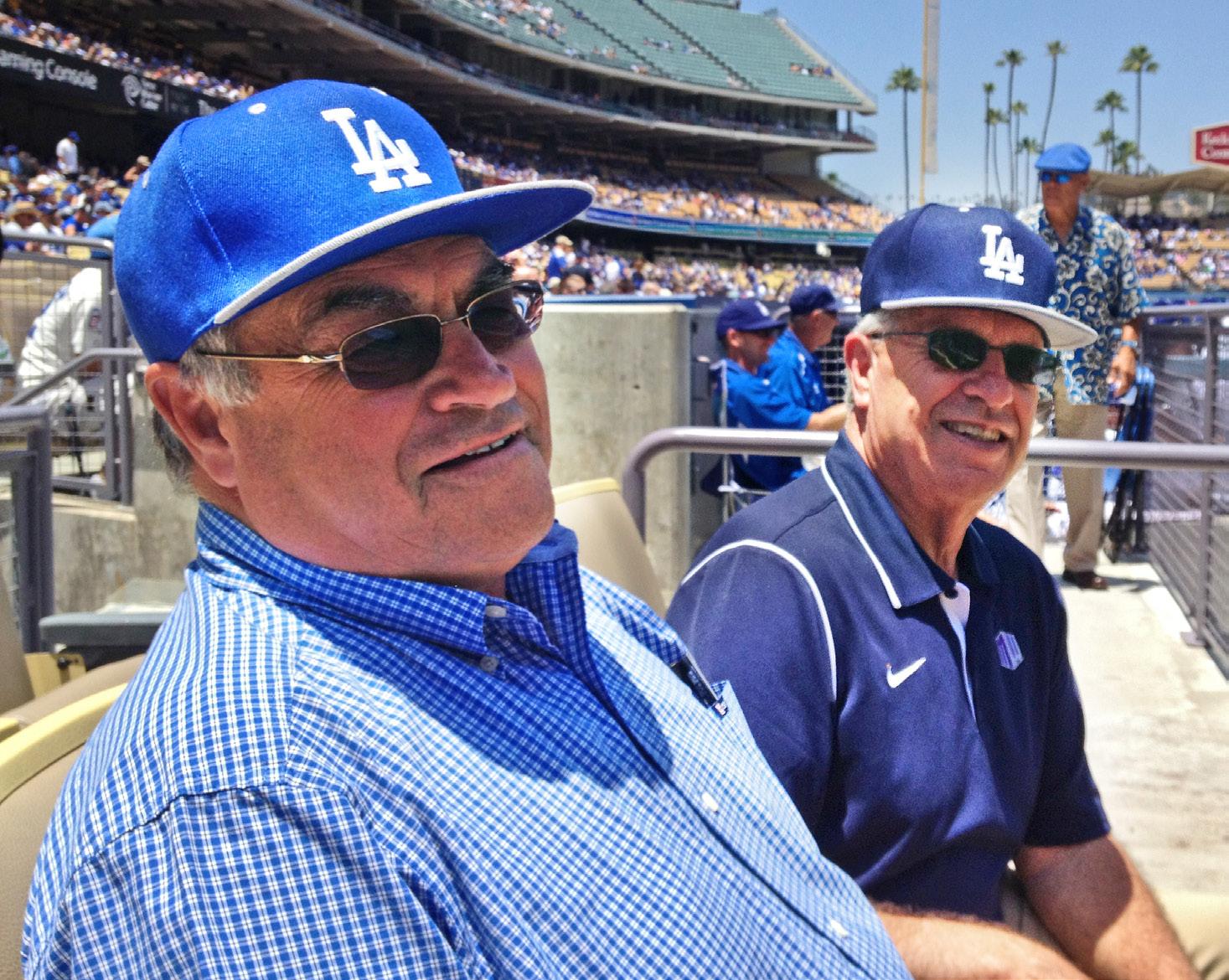
Ross Peterson and Stan Albrecht, who attended grad school together, also share a love of baseball.




